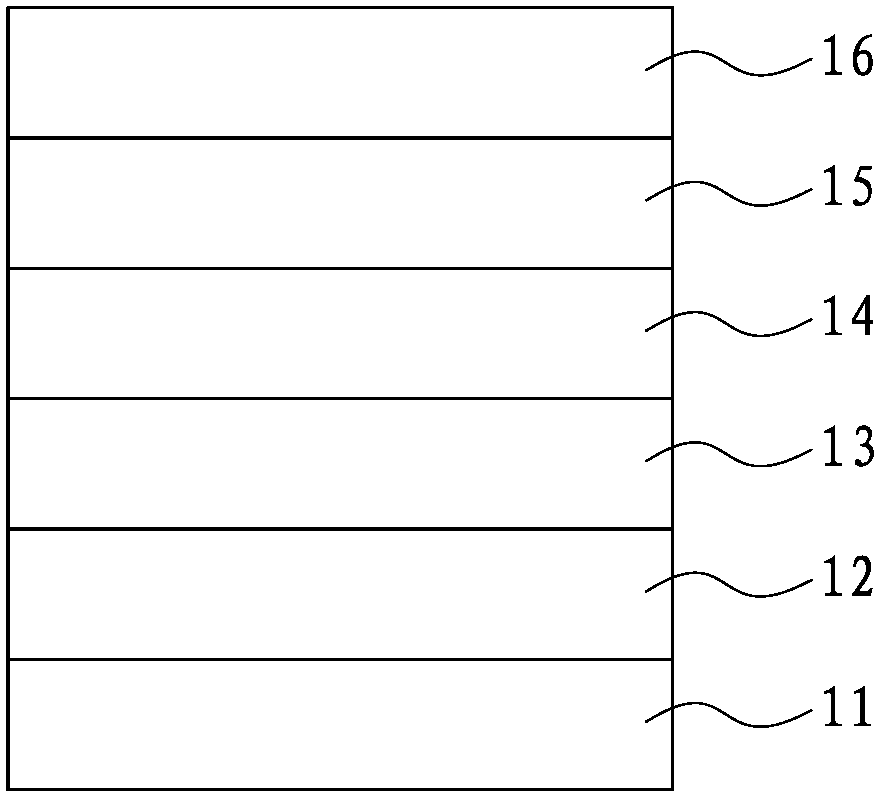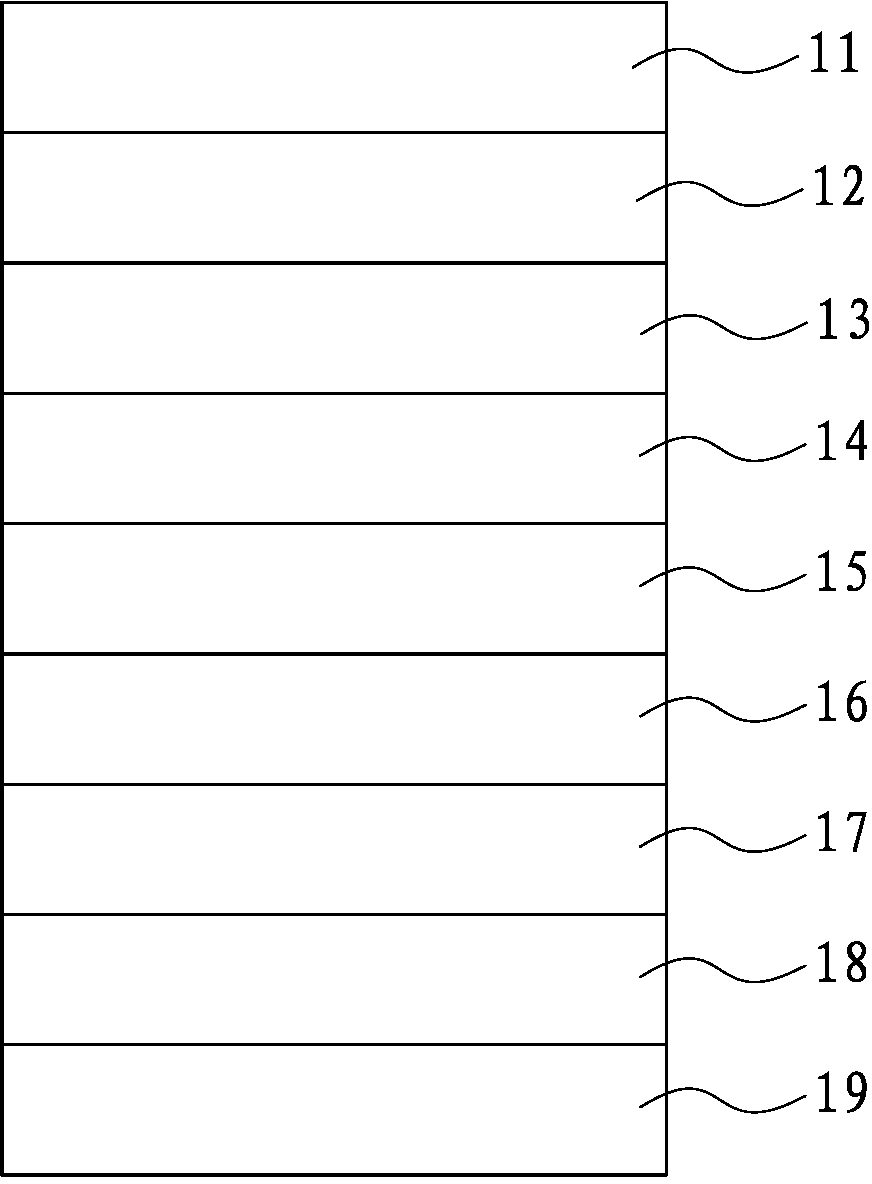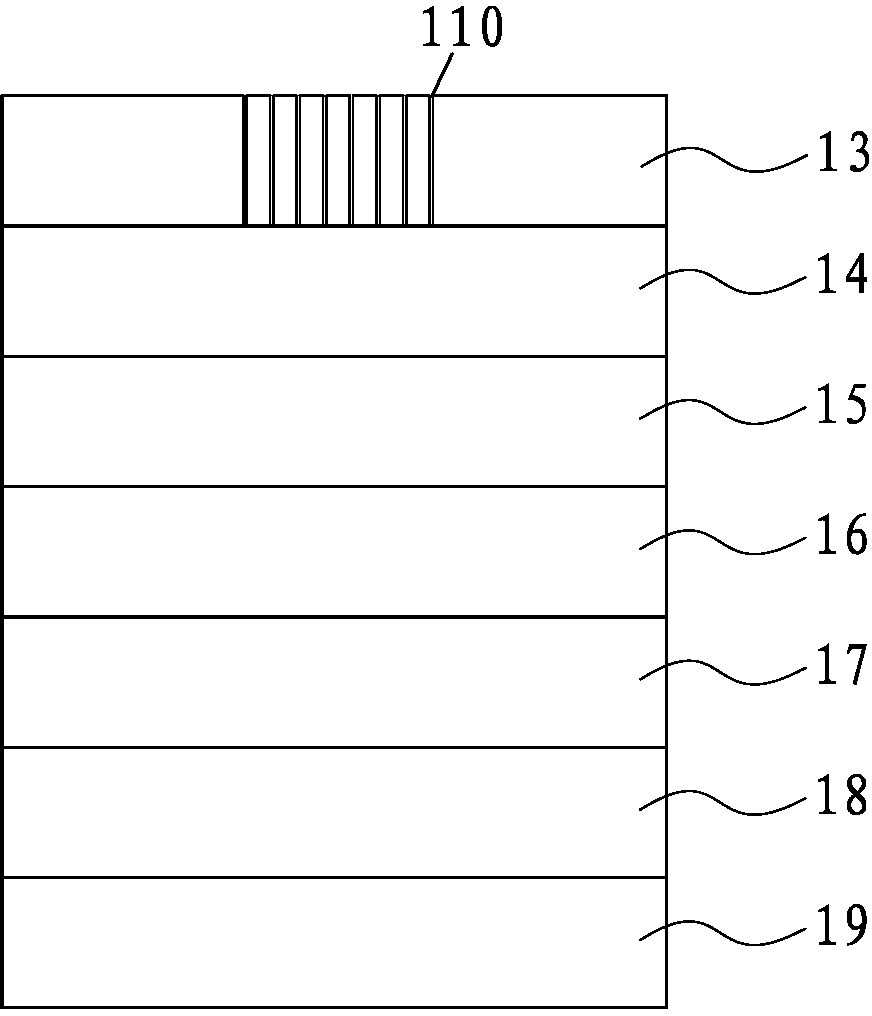Light-emitting diode with electrode light emitting characteristic
A technology of light-emitting diodes and electrodes, which is applied to circuits, electrical components, semiconductor devices, etc., can solve the problems of increasing the luminous capacity of the active layer, large light-blocking area, etc., so as to improve the external quantum efficiency, reduce the light-shielding area, and increase the extraction rate. Effect
- Summary
- Abstract
- Description
- Claims
- Application Information
AI Technical Summary
Problems solved by technology
Method used
Image
Examples
Embodiment 1
[0084] The invention discloses a method for manufacturing a light-emitting diode with electrode light output, and the specific steps are as follows:
[0085] 1. On the epitaxial substrate 11, the peeling layer 12, the light-transmitting channel fabrication layer 13, the first-type conductive layer 14, the active layer 15, and the second-type conductive layer 16 are respectively epitaxially formed in sequence, such as figure 1 shown.
[0086] Wherein, the epitaxial substrate 11 is a GaAs substrate with a thickness of 300 μm. The peeling layer 12 is made of (Al 0.7 Ga 0.3 ) 0.5 In 0.5 Composed of P-35 compounds, and the thickness is 200nm. The constituent material of the transparent channel fabrication layer 13 is Al 0.4 Ga 0.6 As III-V compound, the thickness is 3 μm. The first-type conductive layer 14 is composed of a first-type rough layer, a first-type current spreading layer, and a first-type confinement layer. Among them, the first type of coarsening layer consist...
Embodiment 2
[0097] The invention discloses a method for manufacturing a light-emitting diode with electrode light output, and the specific steps are as follows:
[0098] 1. On the epitaxial substrate 21, a buffer layer 22, a first-type conductive layer 23, an active layer 24, and a second-type conductive layer 25 are respectively epitaxially formed in sequence, such as Figure 7 shown.
[0099] Wherein, the epitaxial substrate 21 is a sapphire substrate with a thickness of 300 μm. The buffer layer 22 is made of undoped GaN III-V compound with a thickness of 2 μm. The first-type conductive layer 23 is made of Si-doped GaN III-V compound with a thickness of 2.5 μm. The active layer 24 adopts a cross-growth structure of five pairs of quantum wells and quantum barriers. Specifically, the quantum barrier is made of AlGaN III-V compound with a thickness of 12nm. The quantum well is composed of GaInN III-V compound with a thickness of 4nm. The second-type conductive layer 25 is made of Mg-d...
Embodiment 3
[0110] The invention discloses a method for manufacturing a light-emitting diode with electrode light output, and the specific steps are as follows:
[0111] 1. On the epitaxial substrate 31, a buffer layer 32, a first-type conductive layer 33, an active layer 34, a second-type conductive layer 35, and a light-transmitting channel fabrication layer 36 are sequentially epitaxially formed, such as Figure 13 shown.
[0112] Wherein, the epitaxial substrate 31 is a GaAs substrate with a thickness of 300 μm. The first-type conductive layer 33 is composed of a Bragg reflection layer and a first-type confinement layer. Among them, the Bragg reflection layer is composed of 30 groups of Al 0.5 Ga 0.5 As / AlAs III-V compounds are alternately formed. The first-type confinement layer consists of (Al 0.7 Ga 0.3 ) 0.5 In 0.5 Composed of P-three and five-group compounds, and the thickness is 750nm. The active layer 34 is composed of 26 groups (Al 0.7 Ga 0.3 ) 0.5 In 0.5 P / Ga 0....
PUM
 Login to View More
Login to View More Abstract
Description
Claims
Application Information
 Login to View More
Login to View More - R&D
- Intellectual Property
- Life Sciences
- Materials
- Tech Scout
- Unparalleled Data Quality
- Higher Quality Content
- 60% Fewer Hallucinations
Browse by: Latest US Patents, China's latest patents, Technical Efficacy Thesaurus, Application Domain, Technology Topic, Popular Technical Reports.
© 2025 PatSnap. All rights reserved.Legal|Privacy policy|Modern Slavery Act Transparency Statement|Sitemap|About US| Contact US: help@patsnap.com



